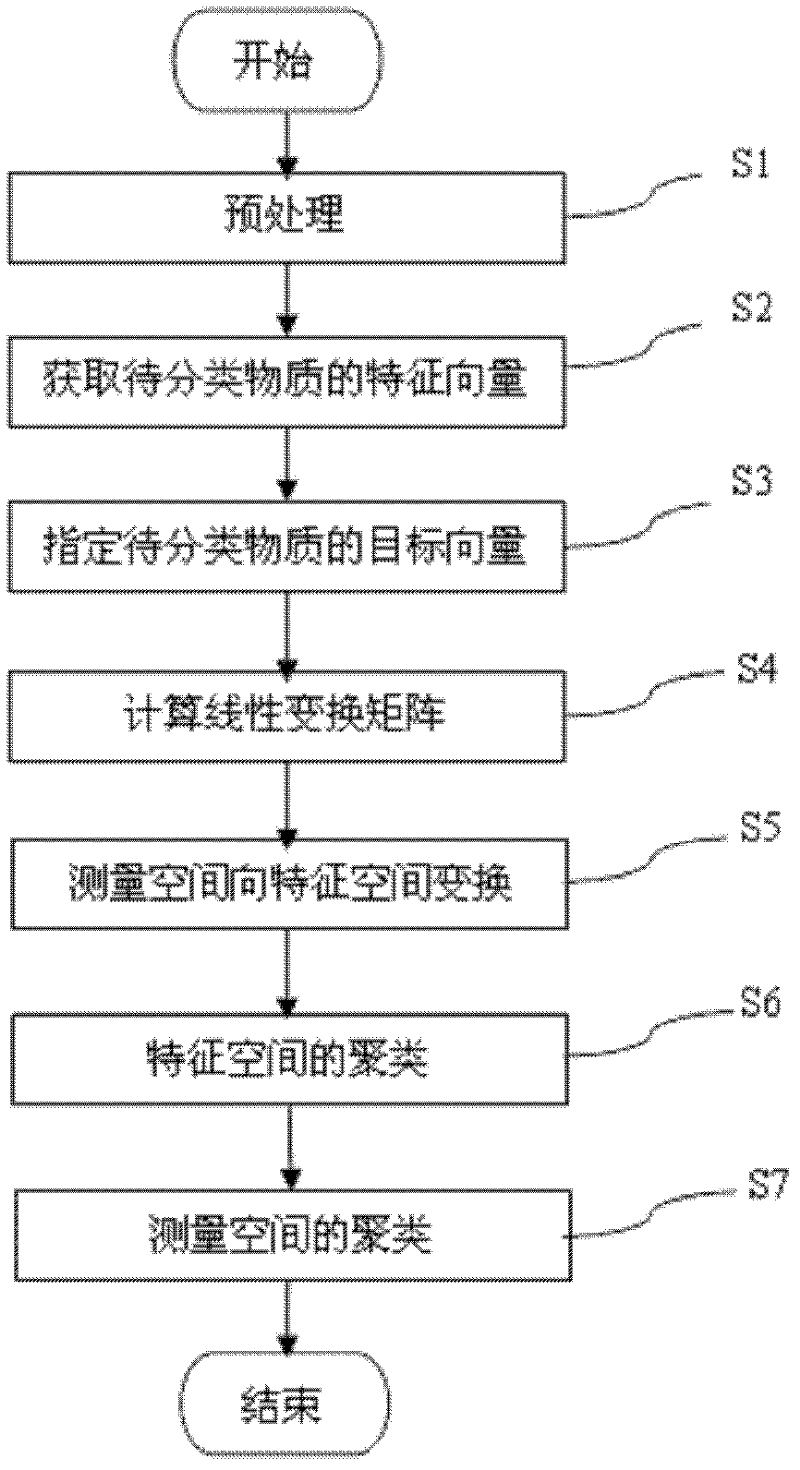Method for fast clustering medical sequential images
A technology of sequence image and clustering method, which is applied in the field of rapid clustering of medical sequence images, can solve problems such as low clustering accuracy, poor clinical practicability, and slow processing speed, and achieve high clustering accuracy, strong clinical practicability, and Effects with fast processing speed
- Summary
- Abstract
- Description
- Claims
- Application Information
AI Technical Summary
Problems solved by technology
Method used
Image
Examples
Embodiment
[0027] A fast clustering method for medical sequence images is realized by a CT (Computed Tomography, computerized tomography scanner) imaging workstation. The method is as follows: figure 1 As shown, the steps are as follows:
[0028] S1) Preprocessing
[0029] CT imports sequence images, observes sequence images, and determines the number of classifications;
[0030] S2) Obtain the eigenvectors of the substances to be classified to form a matrix of eigenvectors
[0031] The method to obtain the feature vector of the substance to be classified is: assuming that there are n frames of sequence images in the measurement space, the substances are divided into k categories, and d points {x 1 , x 2 ,...,x d}, defining the characteristics of this type of substance on the frame image as: Also select and calculate the characteristics of this kind of substance on other frames, and form the feature vector of this kind of substance, and obtain the feature vector of other kinds of s...
PUM
 Login to View More
Login to View More Abstract
Description
Claims
Application Information
 Login to View More
Login to View More - R&D
- Intellectual Property
- Life Sciences
- Materials
- Tech Scout
- Unparalleled Data Quality
- Higher Quality Content
- 60% Fewer Hallucinations
Browse by: Latest US Patents, China's latest patents, Technical Efficacy Thesaurus, Application Domain, Technology Topic, Popular Technical Reports.
© 2025 PatSnap. All rights reserved.Legal|Privacy policy|Modern Slavery Act Transparency Statement|Sitemap|About US| Contact US: help@patsnap.com

